Introduction
Home inspection technology has revolutionized the way properties are evaluated and assessed. With the introduction of advanced equipment and tools, home inspectors are now able to thoroughly examine various aspects of a property, including its structural integrity, electrical systems, plumbing, and HVAC systems.
This technology allows for a more accurate and comprehensive evaluation, ensuring that potential buyers or homeowners have a clear understanding of any potential issues or maintenance requirements.
Infrared cameras, moisture meters, and digital reporting software are just a few examples of the cutting-edge technology used in home inspections.
This technology not only saves time but also provides a higher level of accuracy, enabling inspectors to identify hidden problems that may not be visible to the naked eye.
Ultimately, home inspection technology enhances the overall transparency and confidence in the real estate market, benefiting both buyers and sellers.
The role of technology in home inspections has revolutionized the way properties are assessed and evaluated. With the advancements in technology, inspectors now have access to a wide range of tools and devices that aid in the thorough examination of a home.
Thermal imaging cameras, for instance, can detect hidden moisture or insulation issues, while drones can capture aerial views of the property, allowing inspectors to identify potential roof or chimney problems.
Additionally, specialized software and apps enable inspectors to create detailed reports with photos and videos, providing homeowners with a comprehensive understanding of the property’s condition. Overall, technology has significantly enhanced the accuracy, efficiency, and effectiveness of home inspections, ensuring that potential issues are identified and addressed promptly.
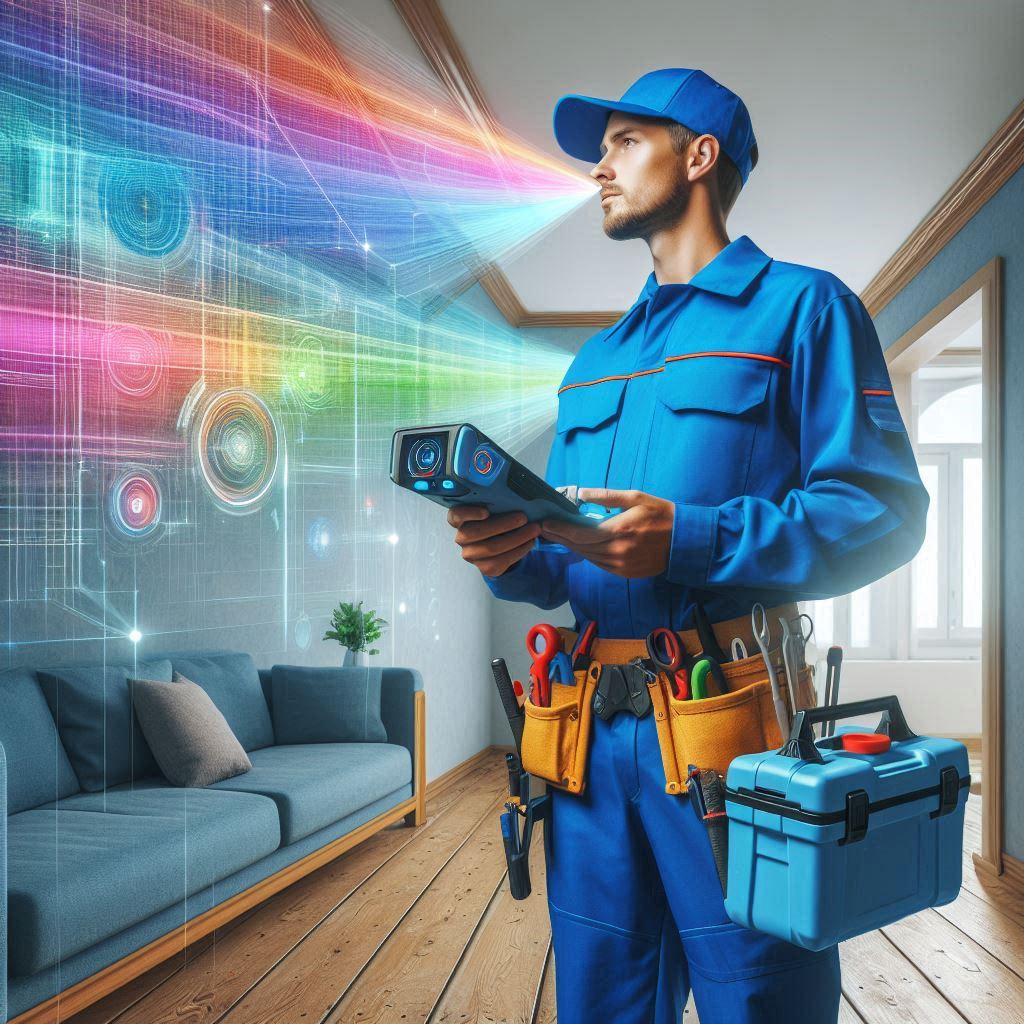
Benefits of Using Technology in Home Inspections
In today’s fast-paced world, technology has become an integral part of our daily lives. From smartphones to smart homes, it has revolutionized the way we live and work. One area where technology has made a significant impact is in the field of home inspections. With the advent of advanced tools and software, home inspectors can now perform their tasks more efficiently and accurately.
This article will explore the benefits of using technology in home inspections.
Firstly, technology has greatly improved the accuracy of home inspections. In the past, inspectors relied on manual measurements and visual inspections to identify potential issues in a property. However, these methods were prone to human error and often missed hidden problems. With the introduction of thermal imaging cameras and moisture meters, inspectors can now detect hidden leaks, electrical issues, and insulation problems that would have otherwise gone unnoticed.
This not only ensures a more thorough inspection but also provides homeowners with a comprehensive report on the condition of their property.
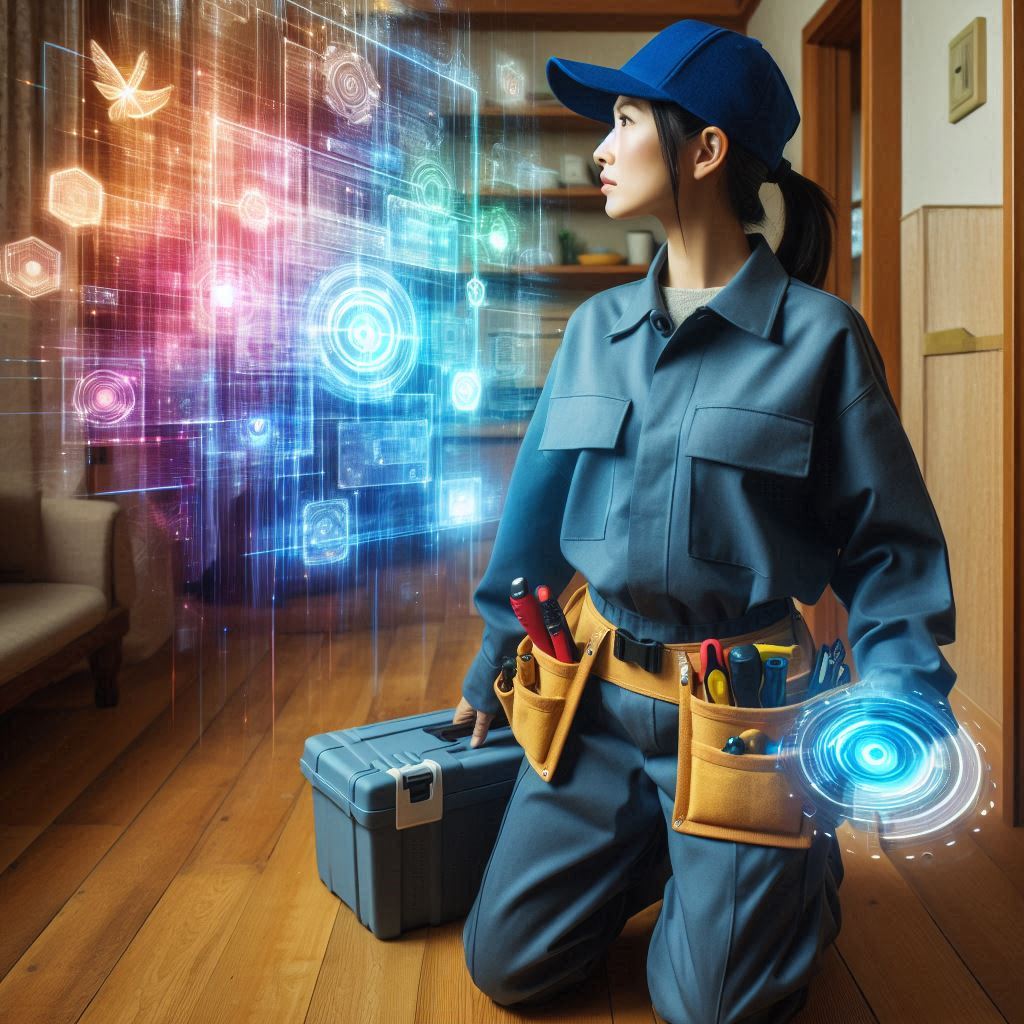
Secondly, technology has made the process of home inspections more efficient. In the past, inspectors had to rely on pen and paper to document their findings, which could be time-consuming and prone to errors.
However, with the advent of inspection software, inspectors can now input their observations directly into a digital platform, eliminating the need for manual data entry.
This not only saves time but also reduces the chances of errors in the final report. Additionally, inspection software often comes with built-in templates and checklists, making it easier for inspectors to ensure that they cover all the necessary areas during an inspection.
Furthermore, technology has made it easier for home inspectors to communicate their findings to clients.
In the past, inspectors had to rely on written reports or verbal explanations to convey their observations. However, with the introduction of digital reports and multimedia presentations, inspectors can now provide clients with a more visual and interactive experience. This not only helps clients better understand the issues identified during the inspection but also allows them to make more informed decisions about the property.
Additionally, digital reports can be easily shared with other stakeholders, such as real estate agents or contractors, facilitating a smoother and more efficient process for all parties involved.
Moreover, technology has improved the overall safety of home inspections. In the past, inspectors had to physically access hard-to-reach areas, such as roofs or crawl spaces, which could be dangerous and potentially lead to accidents. However, with the use of drones and remote cameras, inspectors can now assess these areas without putting themselves at risk. This not only ensures the safety of the inspectors but also allows for a more thorough inspection of the property.
conclusion
the role of technology in home inspections cannot be overstated. From improving accuracy and efficiency to enhancing communication and safety, technology has revolutionized the way inspections are conducted. With the advancements in tools and software, home inspectors can now provide homeowners with a more comprehensive and reliable assessment of their property.
As technology continues to evolve, it is likely that the benefits of using technology in home inspections will only increase, further improving the overall quality of the inspection process.
How Technology is Transforming the Home Inspection Industry
Technology has become an integral part of our lives, revolutionizing various industries and transforming the way we live and work. The home inspection industry is no exception to this trend, as technology has played a significant role in streamlining and enhancing the inspection process.
In this article, we will explore the various ways in which technology is transforming the home inspection industry.
One of the most significant advancements in technology that has impacted the home inspection industry is the use of drones. Drones have revolutionized the way inspectors can assess the exterior of a property, especially for large or inaccessible areas. With the ability to capture high-resolution images and videos, drones provide inspectors with a comprehensive view of the property, allowing them to identify potential issues that may not be visible from the ground. This technology not only saves time but also improves the accuracy of the inspection process.
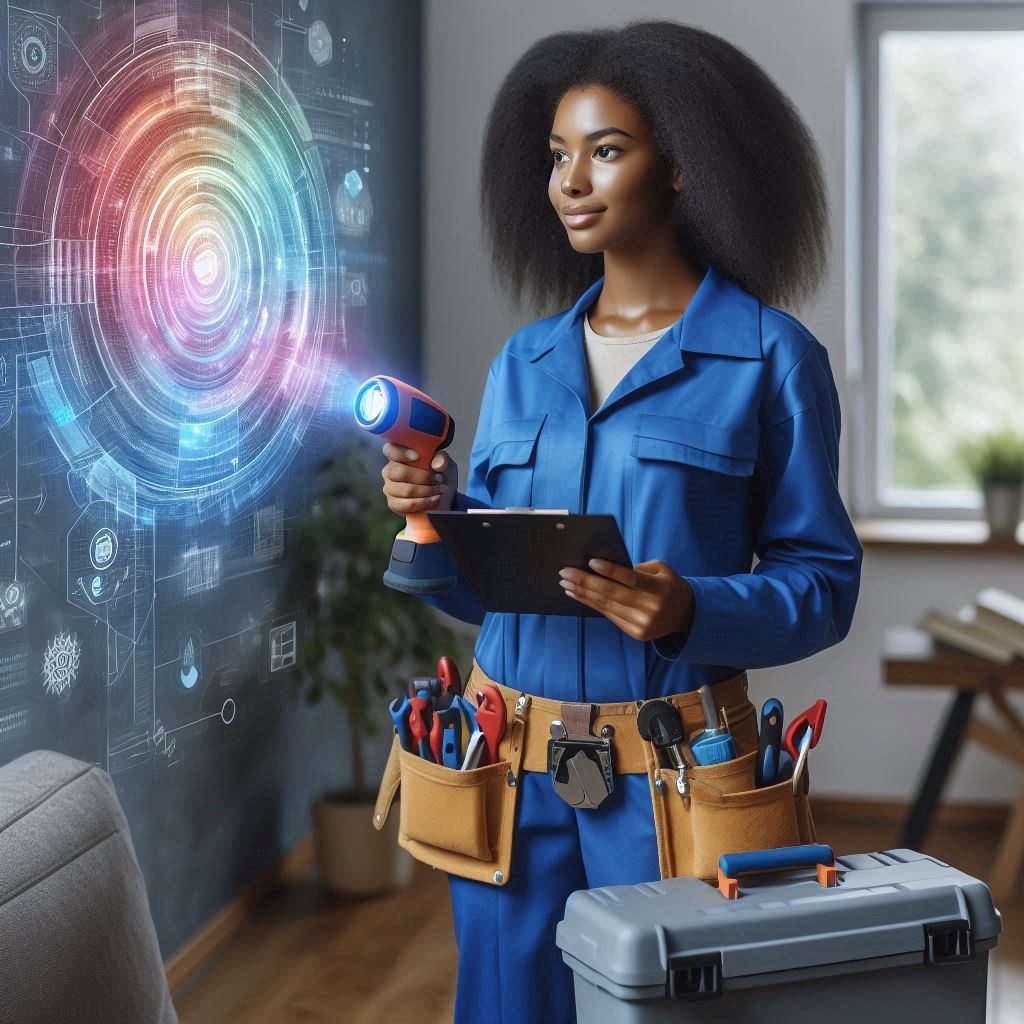
Role Of Drones
In addition to drones, another technological advancement that has transformed the home inspection industry is the use of thermal imaging cameras.
These cameras can detect temperature differences in a property, helping inspectors identify potential issues such as water leaks, insulation problems, or electrical faults.
By capturing infrared images, thermal imaging cameras provide valuable insights that may not be visible to the naked eye. This technology has significantly improved the efficiency and accuracy of home inspections, enabling inspectors to identify hidden problems that could potentially lead to costly repairs in the future.
Mobile
Furthermore, the use of mobile applications has also revolutionized the home inspection industry. Inspectors can now use mobile devices to record and document their findings during inspections. These applications provide a structured framework for inspectors to follow, ensuring that no aspect of the inspection is overlooked.
Additionally, these applications allow inspectors to capture photos, videos, and audio recordings, which can be easily shared with clients and other stakeholders. This not only improves the efficiency of the inspection process but also enhances communication and transparency between inspectors and clients.
Software
Another significant technological advancement in the home inspection industry is the use of cloud-based software. This software allows inspectors to store and access inspection reports, photos, and other relevant documents securely. With cloud-based software, inspectors can easily retrieve and share inspection reports with clients, real estate agents, and other parties involved in the home buying process.
This technology eliminates the need for physical paperwork, reducing the risk of lost or damaged documents. Additionally, cloud-based software enables inspectors to generate comprehensive and professional reports quickly, enhancing the overall customer experience.
virtual reality (VR)
Lastly, the use of virtual reality (VR) technology is also making waves in the home inspection industry. VR technology allows potential buyers to take virtual tours of properties, providing them with a realistic and immersive experience without physically visiting the property.
This technology is particularly useful for remote buyers or those with limited mobility. By using VR technology, buyers can explore every corner of a property, enabling them to make informed decisions without the need for multiple physical visits. This not only saves time and resources but also enhances the overall home buying experience.
conclusion
technology has significantly transformed the home inspection industry, revolutionizing the way inspections are conducted and improving the overall efficiency and accuracy of the process. From the use of drones and thermal imaging cameras to mobile applications and cloud-based software, technology has provided inspectors with powerful tools to identify potential issues and communicate their findings effectively.
As technology continues to advance, we can expect further innovations that will continue to shape and enhance the home inspection industry.
The Role of Artificial Intelligence in Improving Home Inspections
In recent years, technology has revolutionized various industries, and the field of home inspections is no exception. With the advent of artificial intelligence (AI), home inspections have become more efficient and accurate than ever before. AI has the potential to transform the way homes are inspected, providing homeowners and buyers with a comprehensive understanding of the condition of a property.
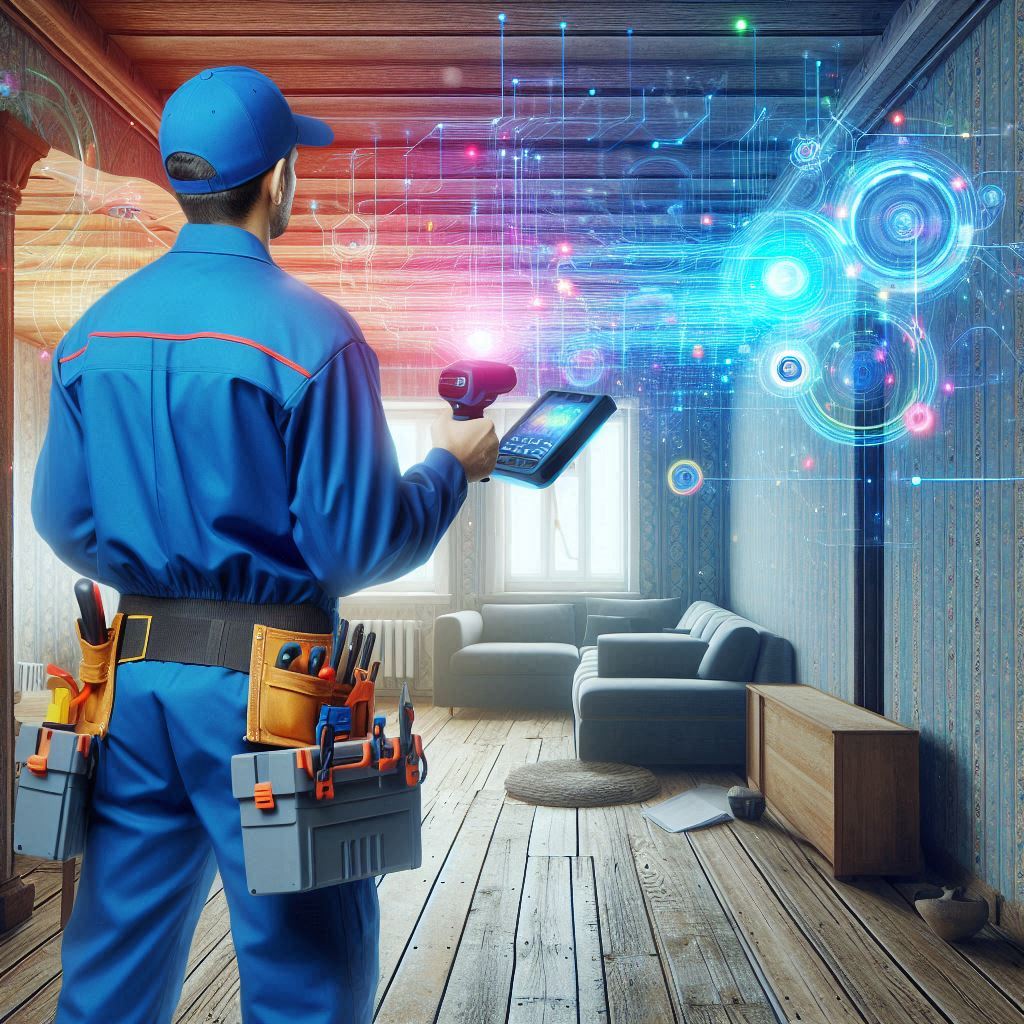
One of the key benefits of AI in home inspections is its ability to analyze large amounts of data quickly and accurately. Traditionally, home inspectors would manually inspect each aspect of a property, taking notes and photographs along the way. This process was time-consuming and prone to human error.
However, with AI, home inspectors can use advanced algorithms to analyze data from various sources, such as photographs, sensor readings, and historical data. This allows for a more thorough and objective assessment of a property’s condition.
Another advantage of AI in home inspections is its ability to detect hidden issues that may not be immediately apparent to the naked eye. For example, AI algorithms can analyze thermal images to identify areas of heat loss or water damage that may not be visible during a visual inspection.
This can help homeowners and buyers identify potential problems before they become major issues, saving them time and money in the long run.
Detection
Furthermore, AI can also assist in identifying patterns and trends in home inspections. By analyzing data from multiple inspections, AI algorithms can identify common issues that may be present in a particular type of property or geographic area.
This information can be invaluable for homeowners, buyers, and even real estate agents, as it can help them make more informed decisions about the condition of a property and its potential value.
In addition to improving the accuracy and efficiency of home inspections, AI can also enhance the overall customer experience. With AI-powered tools, homeowners and buyers can access detailed reports and recommendations instantly, without having to wait for a home inspector to compile and deliver the information.
This not only saves time but also provides a more transparent and convenient process for all parties involved.
However, it is important to note that while AI can greatly improve home inspections, it should not replace the role of a human inspector entirely.
Human judgment and expertise are still crucial in interpreting the data provided by AI algorithms and making informed recommendations. AI should be seen as a tool to assist home inspectors, rather than a replacement for their skills and knowledge.
Conclusion
the role of AI in home inspections is rapidly evolving and has the potential to greatly improve the accuracy, efficiency, and overall customer experience of the process. By leveraging advanced algorithms and analyzing large amounts of data, AI can provide homeowners and buyers with a comprehensive understanding of a property’s condition.
However, it is important to remember that AI should be used as a tool to assist human inspectors, rather than replace them entirely. With the right balance between AI and human expertise, the field of home inspections can continue to benefit from the advancements in technology.
Revolutionizing Structural Assessment: The Power of Technology
In today’s fast-paced world, technology has permeated every aspect of our lives, drastically transforming how we operate and interact. One field that has particularly benefited from technological advancements is structural assessment. Gone are the days when engineers had to rely solely on manual inspections and subjective evaluations to determine the safety and stability of buildings and infrastructure.
The power of technology has revolutionized this process, providing engineers with a wide array of tools and resources to accurately assess structures.
From drones equipped with high-resolution cameras to laser scanning technology, these innovations have enabled engineers to capture detailed data and generate precise 3D models of structures, allowing for more informed decision-making and targeted repairs. Furthermore, advanced sensors and monitoring systems can now be installed within structures, continuously collecting data on their performance and detecting potential issues in real-time.
With the power of technology, structural assessment has entered a new era of efficiency, accuracy, and safety, ensuring the longevity and reliability of our built environment.
Structural assessment technology refers to the tools, techniques, and methodologies used to evaluate and analyze the condition, stability, and performance of various structures. This technology encompasses a wide range of approaches, including visual inspections, non-destructive testing, and computer simulations.
By utilizing advanced sensors, imaging devices, and data analysis algorithms, structural engineers can accurately assess the health and integrity of buildings, bridges, dams, and other infrastructure.
This technology plays a crucial role in ensuring the safety and reliability of structures, identifying potential defects or vulnerabilities, and guiding appropriate maintenance and repair decisions. With continuous advancements in this field, structural assessment technology is becoming increasingly efficient, cost-effective, and reliable, contributing to the sustainable development and longevity of our built environment.
MoldSense: Advanced Technology for Mold Detection
MoldSense is an innovative and advanced technology designed specifically for mold detection. With its state-of-the-art features and capabilities, MoldSense is a game-changer in identifying and preventing mold growth.
By utilizing cutting-edge sensors and algorithms, MoldSense can accurately detect the presence of mold spores in the air and surfaces, providing real-time data and alerts to potential mold issues in homes, offices, or any indoor environment.
This technology not only saves time and money but also helps in safeguarding health by proactively addressing the mold problem before it becomes a serious threat. With MoldSense, users can take proactive measures and ensure a healthy and mold-free living or working environment.
MoldSense technology
MoldSense is a revolutionary technology that brings advanced mold detection capabilities to the forefront. With its cutting-edge features and state-of-the-art sensors, MoldSense is designed to provide accurate and real-time information about the presence of mold in any environment.
This innovative technology utilizes advanced algorithms and machine learning techniques to analyze air quality, humidity levels, and temperature fluctuations, which are key indicators of potential mold growth.
MoldSense offers a user-friendly interface that displays detailed reports and alerts, allowing users to take necessary actions promptly and effectively. By providing early detection and monitoring capabilities, MoldSense ensures a healthier and safer living or working environment for everyone.
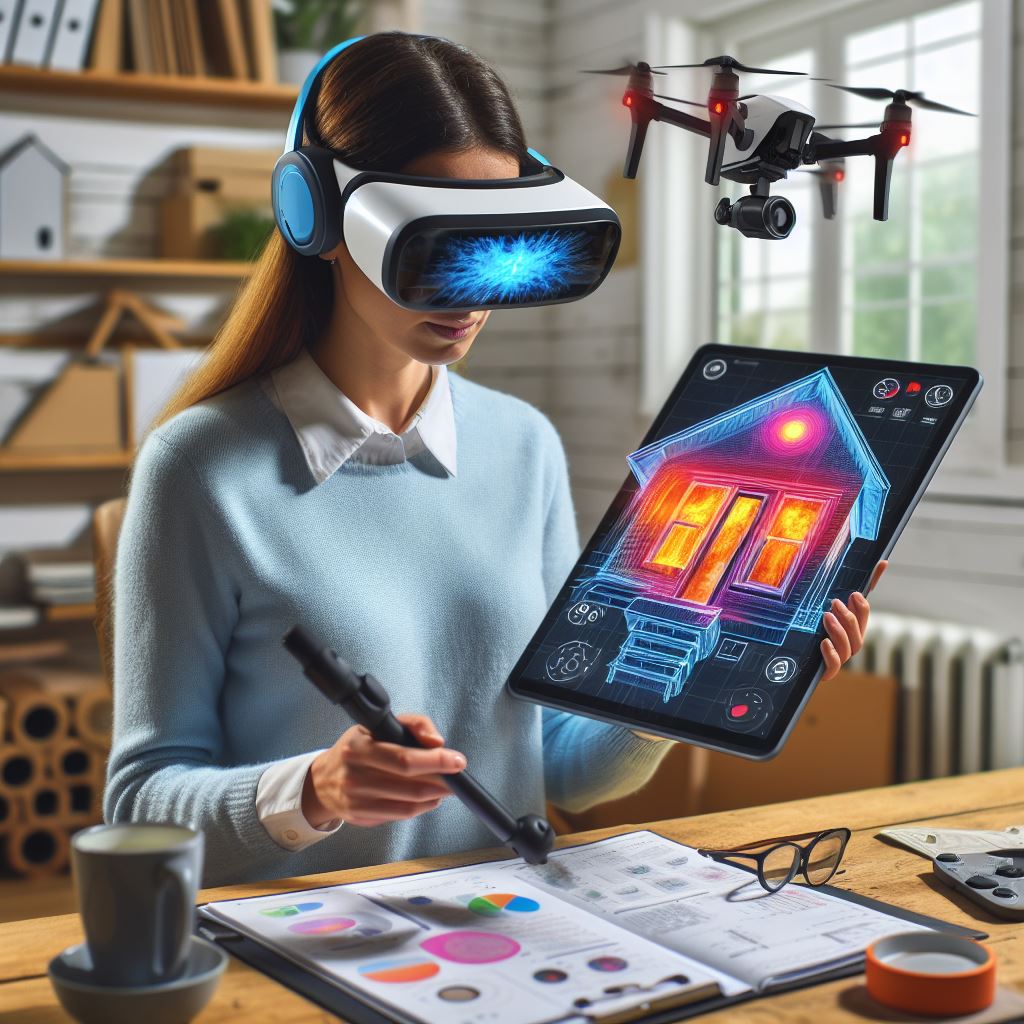
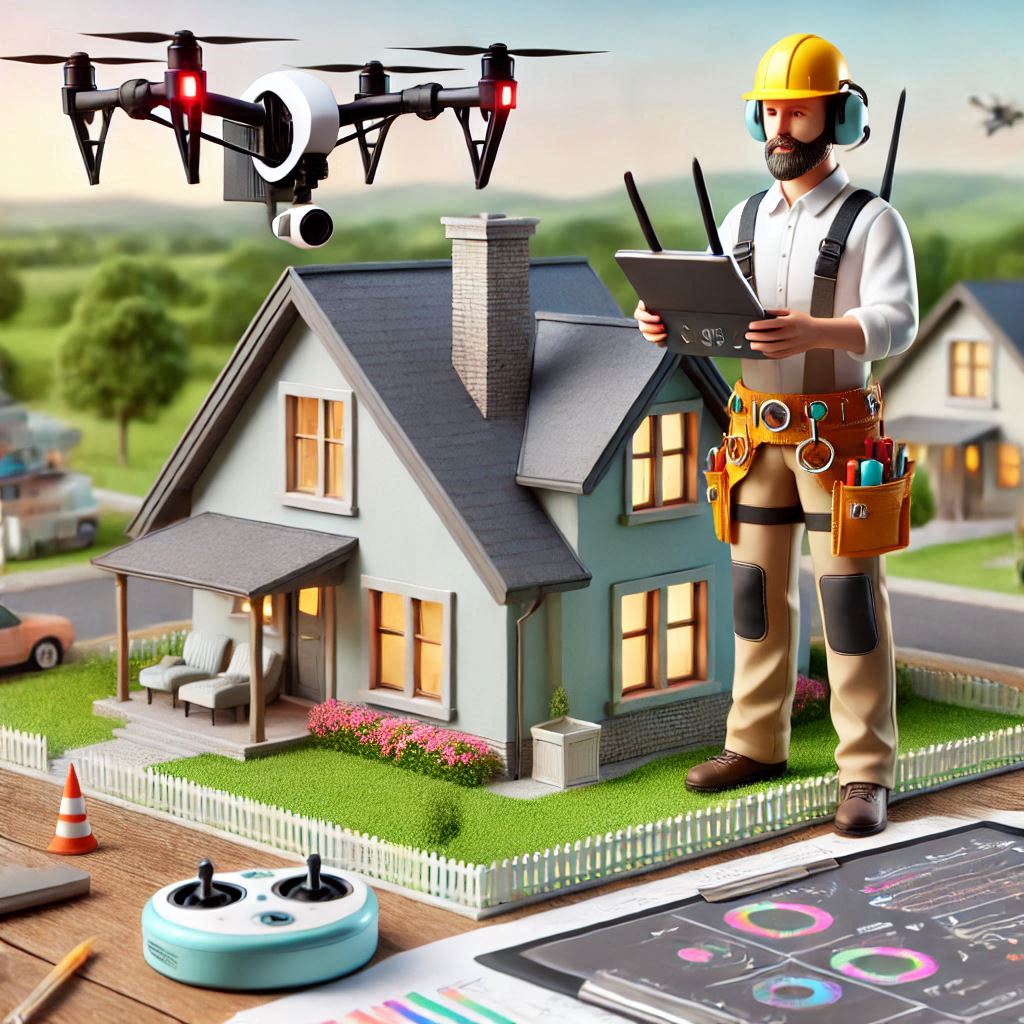
[…] benefits to both inspectors and homeowners. One of the most significant advantages of using home inspection technology is the reduction in inspection costs. This article will explore the various ways in which home […]